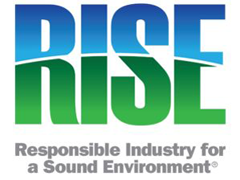KEY FINDINGS
Universally, well-maintained green spaces are important to U.S. adults.
Nearly all adults say it is important that their yard appears well-maintained (95% very/somewhat important) and that their community has local green spaces that are well-maintained (97%). More than 6-in-10 say having these well-maintained green spaces is very important.
What adults value the most about well-maintained yards and lawns is that they provide a place to relax, unwind and entertain.
When asked to rank order five attributes on what respondents value the most about well-maintained yards and lawns, 69% say they value a well-maintained yard the most because “it’s a place to relax, unwind and entertain” (ranked 1 or 2).
- “Provides an area for children to play and be outdoors” (37% ranked 1 or 2) and “increases my property value” (36%) are virtually tied for what adults value the second most about well-maintained yards.
High valued factors of a well-maintained yard or lawn vary according to segmentation but not in a surprising way:
- Adults with children under 18 living in their household are significantly more likely than those without children at home to highly value a lawn or yard’s ability to provide an area for kids to play (61% vs. 25%, respectively).
- Homeowners (42%), Boomers (49%), and above average income earners ($120K+: 44%) highly value yards and lawns because they increase property value.
While an overwhelming majority (89%) of U.S. adults agree that lawns and natural grass turf have a positive impact on the environment, there is an opportunity to provide more information about the environmental benefits a healthy, natural grass lawn can provide:
- One-fourth (25%) are aware that an average-sized natural grass lawn can capture as much as 300 pounds of carbon per year.
- 28% are aware that just 2,500 square feet of a natural grass lawn can produce enough oxygen for a family of four to breathe.
- And 35% are aware that a natural grass lawn can cool the surrounding area by as much as 25 degrees.
Nearly all (92%) adults can agree that healthy, well-maintained, and properly fertilized lawns filter rainwater, absorb nutrients and hold soil in place preventing runoff.
Adults generally trust that landscape and lawn care professionals are well-equipped with the knowledge and experience needed to apply pesticides and fertilizers properly and safely.
Seven in 10 (71%) adults believe that lawn care professionals have the knowledge and experience needed to safely and properly apply pesticides and fertilizers. Population segments that over-index on this belief include:
- Recent pesticide users (80%)
- Millennials (79%)
- Households with children under 18 (78%)
- Urbanites (77%)
- Higher income households ($120K+: 77%)
A strong majority of U.S. adults trust both federal and state governments to provide effective and appropriate regulation for pesticide and fertilizer products.
- 94% of respondents who trust their state government also trust the EPA, and 77% of respondents who trust the EPA also trust their state government.
Seven-in-ten (71%) adults agree that they want to have the ability to purchase and personally use residential pesticide products around their own home and yard. Nine in 10 (90%) recent pesticide users agree.
ABOUT THIS STUDY
This study was undertaken by RISE (Responsible Industry for a Sound Environment) in collaboration with the National Association of Landscape Professionals (NALP).
The findings in this document are drawn from an online survey fielded March 16 – 20, 2023, among n=1,004 U.S.* adults age 18 and older who live in a residence or home with a yard or outdoor green space. The interview length averaged 5 minutes. The margin-of-error is +/-3.1% at the 95% confidence level. Survey results are weighted by age, gender and region to represent the entire 18 and older population of the U.S.*
* Respondents are from three geographical Census regions within the United States:
- Midwest: Illinois, Indiana, Iowa, Kansas, Michigan, Minnesota, Missouri, Nebraska, North Dakota, Ohio, South Dakota, and Wisconsin
- Northeast: Connecticut, Maine, Massachusetts, New Hampshire, New Jersey, New York, Pennsylvania, Rhode Island, and Vermont
- South (comprised of the East South Central and South Atlantic regions): Alabama, Delaware, D.C., Florida, Georgia, Kentucky, Maryland, Mississippi, North Carolina, South Carolina, Tennessee, Virginia, and West Virginia
